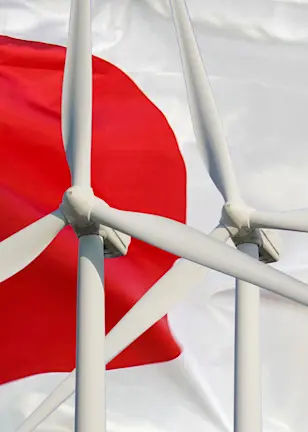Disclaimer Robeco Switzerland Ltd.
The information contained on these pages is solely for marketing purposes.
Access to the funds is restricted to (i) Qualified Investors within the meaning of art. 10 para. 3 et sequ. of the Swiss Federal Act on Collective Investment Schemes (“CISA”), (ii) Institutional Investors within the meaning of art. 4 para. 3 and 4 of the Financial Services Act (“FinSA”) domiciled Switzerland and (iii) Professional Clients in accordance with Annex II of the Markets in Financial Instruments Directive II (“MiFID II”) domiciled in the European Union und European Economic Area with a license to distribute / promote financial instruments in such capacity or herewith requesting respective information on products and services in their capacity as Professional Clients.
The Funds are domiciled in Luxembourg and The Netherlands. ACOLIN Fund Services AG, postal address: Leutschenbachstrasse 50, CH-8050 Zürich, acts as the Swiss representative of the Fund(s). UBS Switzerland AG, Bahnhofstrasse 45, 8001 Zurich, postal address: Europastrasse 2, P.O. Box, CH-8152 Opfikon, acts as the Swiss paying agent.
The prospectus, the Key Investor Information Documents (KIIDs), the articles of association, the annual and semi-annual reports of the Fund(s) may be obtained, on simple request and free of charge, at the office of the Swiss representative ACOLIN Fund Services AG. The prospectuses are also available via the website https://www.robeco.com/ch.
Some funds about which information is shown on these pages may fall outside the scope of CISA and therefore do not (need to) have a license from or registration with the Swiss Financial Market Supervisory Authority (FINMA).
Some funds about which information is shown on this website may not be available in your domicile country. Please check the registration status in your respective domicile country. To view the Robeco Switzerland Ltd. products that are registered/available in your country, please go to the respective Fund Selector, which can be found on this website and select your country of domicile.
Neither information nor any opinion expressed on this website constitutes a solicitation, an offer or a recommendation to buy, sell or dispose of any investment, to engage in any other transaction or to provide any investment advice or service. An investment in a Robeco Switzerland Ltd. product should only be made after reading the related legal documents such as prospectuses, annual and semi-annual reports.
By clicking “I agree” you confirm that you/the company you represent falls under one of the above-mentioned categories of addressees and that you have read, understood and accept the terms of use for this website.
Sustainable Investing
Carbon footprint
A carbon footprint is the amount of greenhouse gas emissions generated by an individual, company or country over a set time period. Although the term implies primarily the emission of carbon dioxide, it is now often taken to include all gases which cause global warming through the greenhouse effect. This includes the more common industrially emitted gases such as sulfur dioxide and nitrous oxide, and methane which is produced by farm animals. As such, the term can also be referred to as a greenhouse gas footprint.
Carbon neutrality
All human activity creates a carbon footprint, from breathing out to generating electricity, farming, or making a product. Greenhouse gas emissions over many centuries have been proven to warm the planet as they absorb and radiate heat within the enclosed atmosphere of the Earth. The issue in the battle to combat global warming is whether these footprints can be reduced enough to stop global warming getting out of control. For this, carbon neutrality is required. This means that a country does not generate more greenhouse gas emissions than it is able to absorb, either naturally through plant and water cover, or mechanically through carbon capture.
Several nations and blocs such as the EU have already committed to becoming carbon neutral (‘net zero’); most have used the Paris Agreement target of 2050, though some smaller nations such as Austria and Uruguay have set a more ambitious target of 2040. China, which has the world’s largest carbon footprint, has pledged to do so by 2060. Aside from cutting emissions by decarbonizing, many countries are investing in tree plantations and carbon capture systems as part of their neutralization efforts.
Creating returns that benefit the world we live in
Decarbonizing operations
Carbon neutrality for companies essentially means decarbonizing operations to reduce emissions. This is often being done by replacing energy sources derived from fossil fuels with renewable energy, and by finding suppliers who use less carbon-intensive components. This is easier for some industries than others – a carmaker can switch their models from the internal combustion engine to battery-powered vehicles, but this cannot currently be done by airlines.
Measure carbon footprints
Carbon footprints at companies can be measured by using three ways in which greenhouse gas emissions are generated: Scope 1, 2 and 3.
Scope 1 emissions are those that are directly generated by the company, such as an airline emitting exhaust fumes.
Scope 2 emissions are those that are created by the generation of the electricity or heat needed by the company to produce its main products. An electricity utility would therefore have relatively low Scope 1 emissions caused by its infrastructure or grid, but high Scope 2 emissions if its power came from the burning of fossil fuels rather than from renewable sources.
Scope 3 emissions are those caused by the entire value chain, including the end-user of the product over its life cycle, and are much more difficult to measure. A carmaker would have relatively low Scope 1 and 2 emissions when making the car, but if the user of the vehicle burned petrol to run the car over many years, they would cause very high Scope 3 emissions.
















